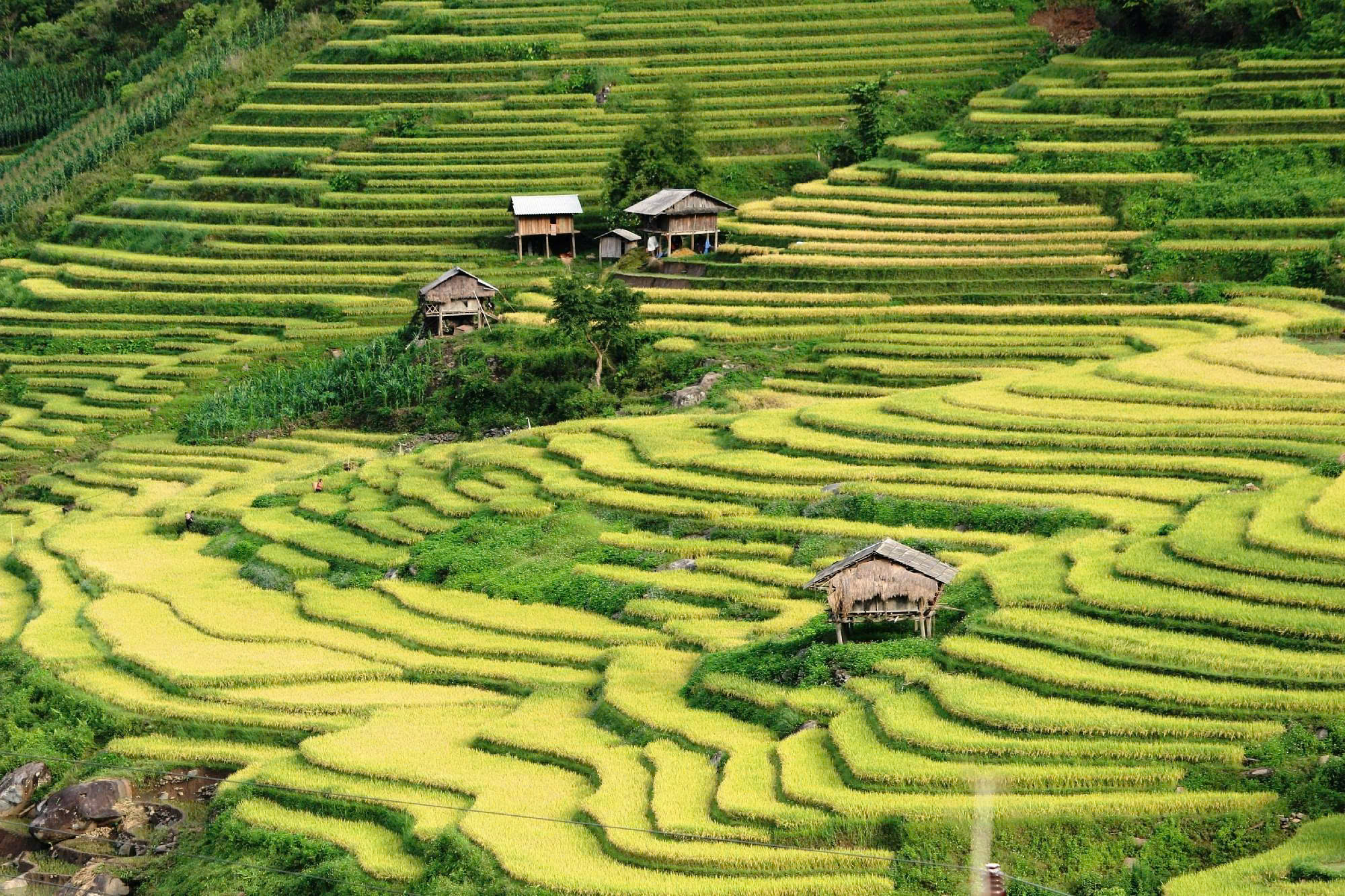The Origins of Terraced Rice Cultivation
The exact origins of terraced rice cultivation in Mu Cang Chai are shrouded in the mists of time. However, it is believed that the Hmong people, who migrated to the region centuries ago, were the first to develop this unique agricultural system. The steep, mountainous terrain posed significant challenges for traditional farming, and the Hmong people found an ingenious solution by constructing terraced fields.
Reasons for Creating Terraced Rice Fields
- Adapting to the terrain: The hilly and mountainous terrain of Mu Cang Chai made it difficult to cultivate crops using traditional farming methods. By creating terraced fields, the Hmong people were able to level out the land and create more arable land.
- Water management: Terraced fields allow for better water management. The terraces capture rainwater and slowly release it into the fields, providing a steady supply of water for the rice plants.
- Erosion control: Terraced fields help to prevent soil erosion, which is a major problem in mountainous areas. The terraces slow down the flow of water and reduce the risk of landslides.
The Role of the Hmong People
The Hmong people played a crucial role in the development and preservation of the terraced rice fields. Their deep knowledge of the local environment and their strong work ethic allowed them to create and maintain these complex agricultural systems. The terraced rice fields are not just a physical landscape; they are also a living testament to the Hmong people’s connection to the land and their way of life.
UNESCO World Heritage Site
Recognizing the outstanding universal value of the terraced rice fields in Mu Cang Chai, UNESCO inscribed them on the World Heritage List in 2007. This designation highlights the importance of preserving these cultural landscapes for future generations.
Challenges and Conservation
Despite their cultural and environmental significance, the terraced rice fields of Mu Cang Chai face numerous challenges, including:
- Rural-urban migration: Many young people are leaving the rural areas to seek opportunities in cities, leading to a decline in the traditional farming practices.
- Climate change: Climate change is causing changes in rainfall patterns and temperatures, affecting rice yields and the overall sustainability of the terraced rice fields.
- Tourism: While tourism brings economic benefits, it can also put pressure on the environment and local communities.
Conclusion
The terraced rice fields of Mu Cang Chai are a remarkable achievement of human ingenuity and a testament to the enduring relationship between people and the land. To preserve this unique cultural landscape for future generations, it is essential to promote sustainable tourism practices, support local communities, and invest in conservation efforts.

Our tattoo studio: Vigor tattoo Studio
Our Website: Backpacker
